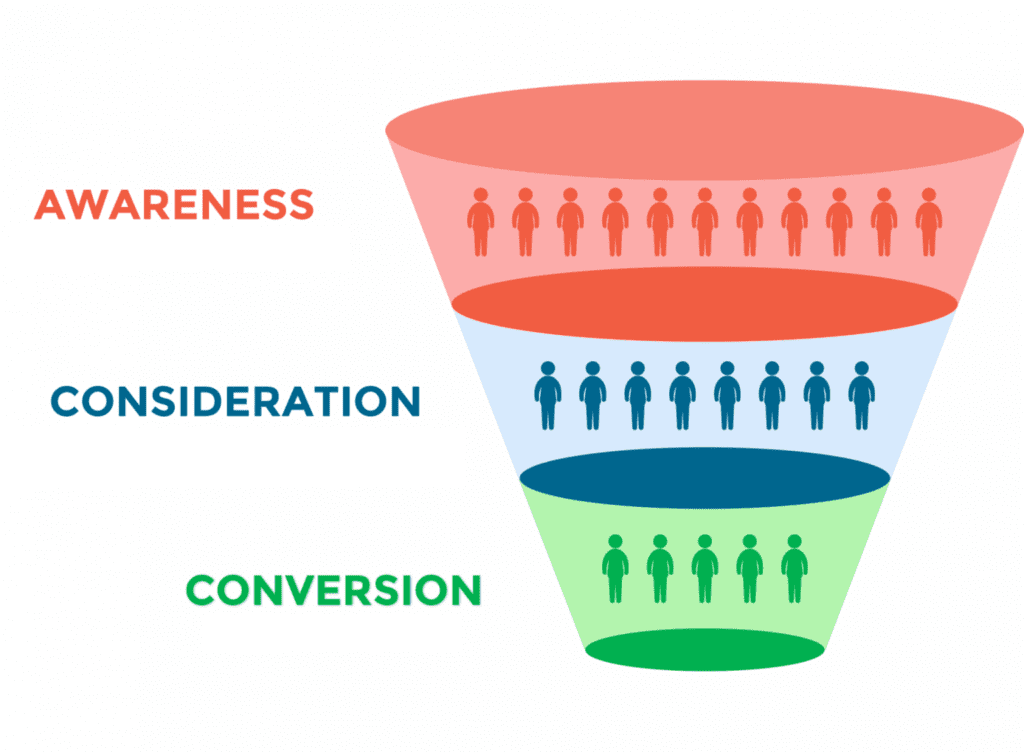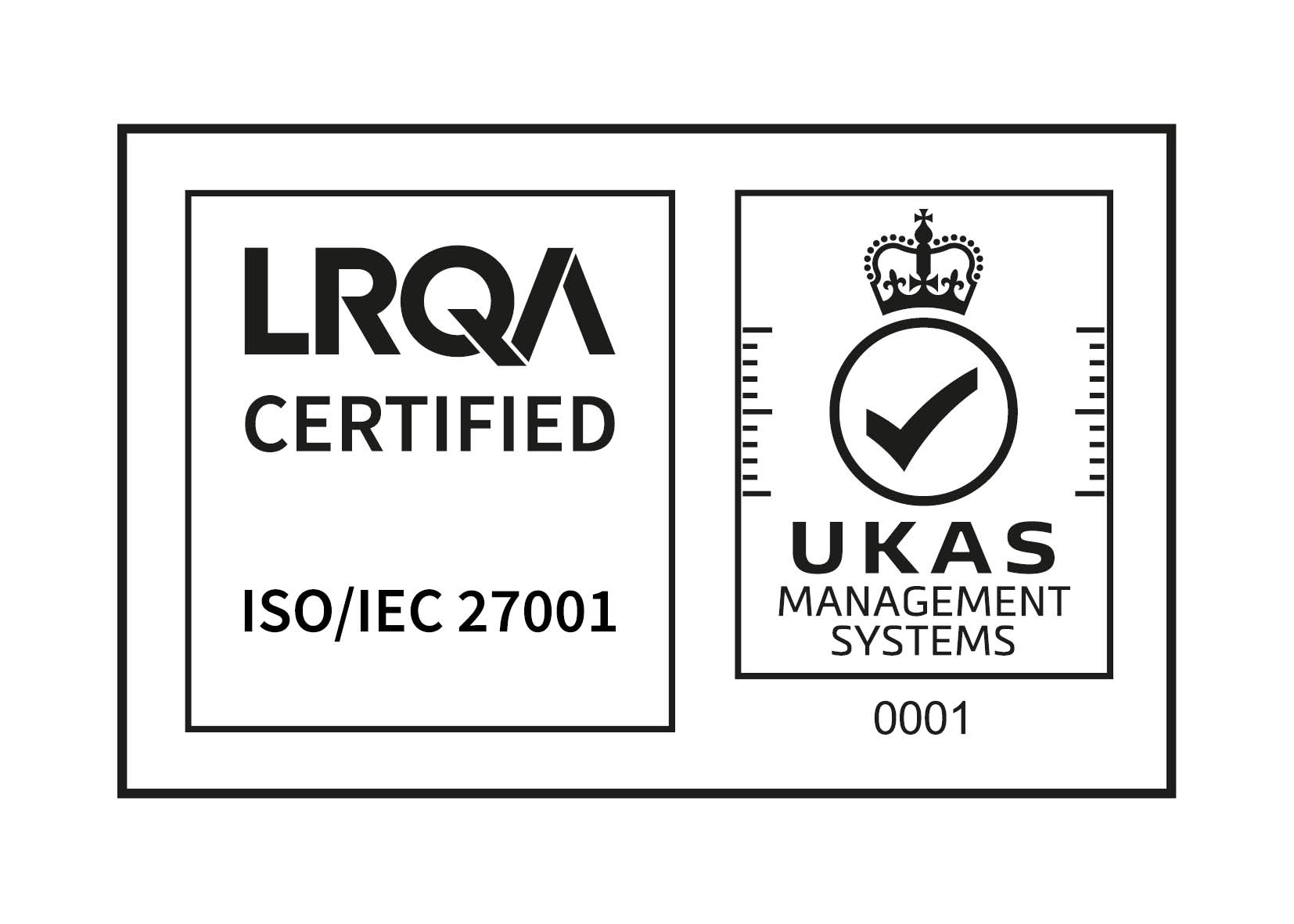- Estimated read time: 5 minutes

What is a Full-Funnel Marketing strategy?
The Full Funnel represents the entire customer journey landscape, which takes a user from an unawareness of the industry/product or service, to ultimately converting to a sale or purchase, and finally customer retention. Full-Funnel is the traditional description of the customer journey, also the term Flywheel is used to depict the role of customer retention in attracting new business.
Three major segments of the journey:

- Upper Funnel (Awareness): Drive awareness around the problem at hand, the solution offered, and the brand offering it.
- Mid Funnel (Consideration): Engage and educate users to give them “reasons to believe” in the service/product offered by the brand.
- Lower Funnel (Conversion): Encourage conversion from user and begin retention tactics to improve customer value.
Why is a full-funnel marketing strategy important?
There are several related benefits and opportunities of full-funnel marketing, let’s evaluate from a few angles:
Holistic Approach: A Full-Funnel Marketing strategy ensures that you’re addressing the entire customer journey, with content that represents their position within the funnel, to help provide a consistent and connected experience for your audience.
Long-Term Growth: Focusing on the entire funnel fosters long-term relationships with customers, leading to sustained growth and profitability.
Customer Insights: A full-funnel approach allows you to gather valuable data and insights at each stage, helping you better understand your customers’ behaviours, preferences, and pain points.
Effective Resource Allocation: By targeting different stages of the funnel with appropriate tactics, you can allocate your marketing resources more effectively and tailor your efforts to where they’ll have the greatest impact.
Higher Conversion Rates: By guiding potential customers through each stage of the funnel, you’re more likely to see higher conversion rates as leads progress toward making a purchase decision.
Customer Retention: A Full-Funnel Marketing strategy doesn’t end with a purchase; it extends to post-purchase engagement and retention. This helps build customer loyalty and encourages repeat business.

What are the key performance indicators at various stages of the funnel and how is success determined?
Awareness
KPI: CPM/Cost Per Thousand Reached/ Ad Recall
In optimizing Awareness efforts, Rocketer prioritize fostering problem and solution awareness. Gauging success through key metrics like CPMs, Cost Per Thousand Reach for broad exposure, and Ad Recall for lasting impact, is key to ensuring our brand deeply resonates with our audience.
Consideration
KPI : Video Watch Time/ Link Clicks/ Landing Page Views
Rocketer drive consideration through achieving user education on product essentials and unique selling points (USPs) through captivating videos and outbound links to enriching landing pages and blog posts. To gauge effectiveness, Rocketer prioritize Video Watch Time and Landing Page Views, affirming widespread product and USP familiarity, aligning with the business goals.
Conversion
KPI : Leads/ Purchase
At Rocketer, enhancing client profitability is paramount, with a prioritization of harmonizing conversion efforts with business objectives. Ideally, Rocketer’s client partnerships allow for tracking sales directly, while using Return on Ad Spend (ROAS) as a KPI sets the gold standard.
What are the challenges of activating a full-funnel strategy in digital media? How do you overcome those challenges?
A common challenge in comprehensive funnel activity lies in measuring and attributing impact which is crucial for answering advertisers’ core question: How does upper and mid-funnel engagement drive conversions? An important step to overcoming this challenge is forging a clear uplift study roadmap to foster consistent data that will substantiate upper and mid funnel triumphs.
Across Rocketer, clients have experienced impressive conversion uplifts of approximately 18% through successful full funnel strategies, within Meta-specific activities. Whilst Brand Lift Studies have proven to show crucial insights around specific Meta upper and mid funnel activity, such as the importance of Traffic optimisation to drive Action Intent, of which Rocketer have observed clients reach up to +3.9pts across Consideration metrics as a result.
Notably, Rocketer client partnerships prioritize regular attribution and econometric analysis, propelling attribution modelling. This strategic approach empowers businesses to meticulously chart their digital landscape, incorporating channel-specific value multipliers for a holistic view of each channel’s impact.
Do creative elements impact the effectiveness of a full-funnel strategy?
What type of creative works best for which part of the buyer journey?
Having strong creative variation throughout the funnel is key to ensuring maximised distribution across a digital strategy. However, at a messaging level, bespoke content should be created at each funnel level:
Awareness: Creatives and messaging should align with exposing audiences to the problem & potential solution offered by the advertiser.
Consideration: Messaging should speak to key USPs and brand differentiators to entice audience to educate themselves on the products/services available.
Conversion: This is an opportunity to include direct reference to pricing or special offers to drive users to a sales/purchase.
What test-and-learn philosophies support a full-funnel marketing strategy?

Collecting, reporting and analysing data at various depths can reveal opportunities for scaling efficiencies. Here are a few examples:
Econometrics in marketing is the quantitative analysis of economic and statistical data to assess the relationships between marketing activities and their impact on business outcomes, enabling businesses to optimize strategies and allocate resources effectively.
Marketing Mix Modeling (MMM) is a statistical analysis technique used to measure the impact of various marketing tactics, such as advertising, pricing, and promotions, on sales and other key performance metrics.
It helps businesses understand the effectiveness of their marketing efforts and allocate resources for optimal results.
Uplift Studies is a technique that tracks channel specific impact. If conducted regular (1 per quarter), they can fuel attribution modelling in line with MMM and Econometrics.
3 Key Takeaways
- Measurement is crucial. Road-mapping MMM, Econometrics and regular uplift studies allows advertisers to prove true value of a multi-channel full funnel landscape.
- Know your customer journey. Having a detailed view on customer journey can allow for both optimal performances, but also cost saving opportunities, ensuring that audiences are hit with the correct content on the correct platform, at the correct time.
- Align on KPIs. High level measurement is important, but aligning on key proxy metrics that can be tracked at a day-to-day level can allow for channel level optimisations and enhancements.

George Swann
Account Manager


